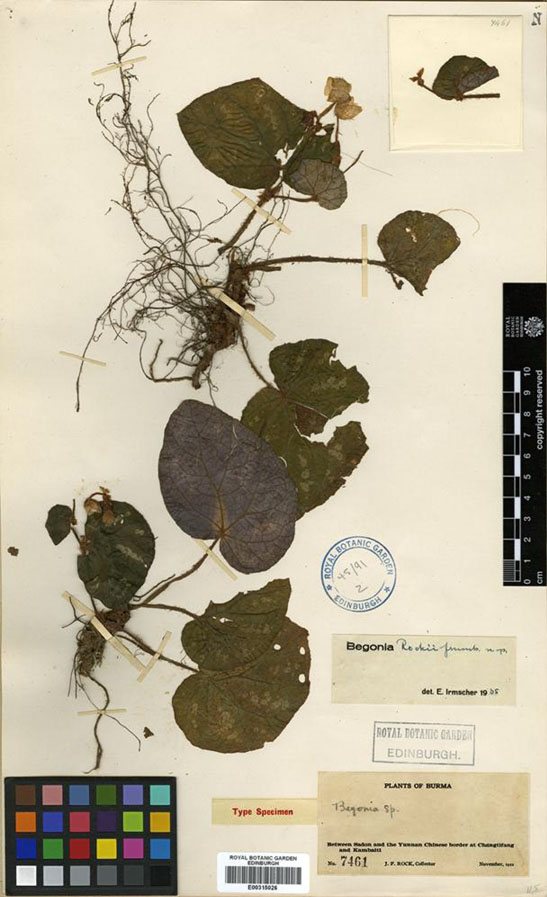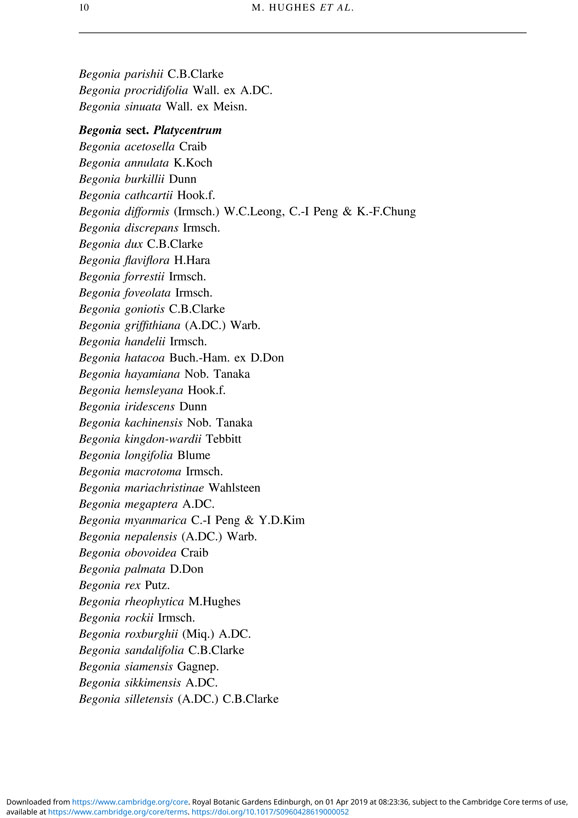La plante a été découverte en Birmanie par Joseph Franz Rock (1884-1962) en novembre 1922 entre Sadon et la frontière chinoise du Yunnan à Changtifang et Kambaiti où elle pousse dans les forêts, sur des parois rocheuses, entre 700 et 800 mètres.

Elle a été décrite en 1939 par Edgar Irmscher (1887-1968) dans Mitteilungen aus dem Institut für Allgemeine Botanik in Hamburg volume 10, pages 544 à 546.
L’épithète spécifique rend hommage à l’inventeur de la plante.
L’espèce fait partie de la section Platycentrum.

Rhizomes allongés de 9 à 14 mm de diamètre, feuilles basales vert foncé, avec de fines taches brunâtres irrégulières, parfois avec des taches blanches entre les nervures principales, largement ovales, asymétriques, 6 ou 7 nervures palmées, au dessous, rougeâtres, hispides, bords finement serrulés et ciliés, inflorescences à poils clairsemés, fleurs femelles à 4 tépales blancs, fleurs mâles à 5 tépales 5 blancs inégaux, largement ovales, capsule à 3 ailes inégales. Floraison en novembre.
Multilication par semis, boutures de rhizomes ou de feuilles pétiolées.

The plant was discovered in Burma (Myanmar) by Joseph Franz Rock (1884-1962) in November 1922 between Sadon and the Chinese border from Yunnan to Changtifang and Kambaiti where it grows in forests, on rock faces, between 700 and 800 meters.
It was described in 1939 by Edgar Irmscher (1887-1968) in Mitteilungen aus dem Institut für Allgemeine Botanik in Hamburg Volume 10, pages 544-546.
The specific epithet pays tribute to the inventor of the plant.
The species is part of the Platycentrum section.
Rhizomes elongated 9-14 mm in diameter, dark green basal leaves, with irregular brownish fine spots, sometimes with white spots between the main veins, broadly ovate, asymmetrical, 6 or 7 veins webbed, below, reddish, hispid, margins finely tightened and ciliate, inflorescences with sparse hairs, female flowers with 4 white tepals, male flowers with 5 tepals 5 unequal whites, broadly ovate, capsule with 3 unequal wings. Flowering in November.
Multilication by seedlings, cuttings of rhizomes or petiolate leaves.


